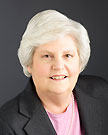AARP Hearing Center
Caregivers are Everywhere
By Nancy A. LeaMond, October 9, 2019 11:09 AM
A few weeks ago, AARP brought together leaders from across industries and sectors to talk about a top priority: how to support the 40 million Americans who help take care of aging parents, spouses, and other loved ones. This was the second time in the last few years that we’ve hosted this caregiving summit, with many achievements worth celebrating. Built on lessons from the first event, a number of partners shared stories of refashioning their products and services to address the needs of family caregivers as both employees and consumers. As an added bonus, these changes have been good for business. Two members of Congress also joined to discuss the growing momentum to craft bipartisan policies to aid family caregivers. Watch video from the Summit
And yet, with all the progress we’ve made, there is still a long way to go.
There is a looming long-term care crisis in America. People are living longer, and while we talk a lot about how we’re extending their healthy active years, the reality isn’t always so rosy. More people are managing chronic conditions and disabilities over the long haul, and at some point for nearly everyone, mobility will become an issue.
This is a daunting problem without clear-cut solutions. But there is one thing that I can guarantee: family caregivers play—and will continue to play—a vital role. The private and public sectors need to take action now to address their needs and concerns.
This is the first in a series of blogs examining FIVE reasons why family caregiving is a critically important issue TODAY. Read the others: 2, 3, 4, 5.
REASON #1: FAMILY CAREGIVERS ARE EVERYWHERE, THE NEED FOR THEM IS GROWING, AND THIS IS TOUGH, UNPAID WORK FOR MILLIONS OF AMERICANS.
Caregiving does not discriminate. Family caregivers are represented across every demographic: age, gender, race, religion, marital and parental status, income, working full-time, part-time or not working.
Nearly one in ten family caregivers are over age 75. One in four are Millennials. Six in ten caregivers are women, and the same proportion are working, either full- or part-time.
These numbers may not give the full picture because many people don’t identify themselves as a “caregiver.” They are simply responsible spouses, children, grandchildren, parents, aunts, uncles, friends, and neighbors doing what needs to get done for someone important in their lives.
I’ve devised a little test in case you aren’t sure whether you’re a caregiver or not (with a hat tip to Jeff Foxworthy) . . .
If you’ve ever called a major insurance provider pretending to be your parent… you might be a caregiver.If you’ve ever tried to decipher the instructions on an air compressor for something other than inflating balloons . . . you might be a caregiver.If you’ve ever picked someone up from the hospital and been given pamphlets about exercise and managing salt when what you really needed was a crash course in wound care… you might be a caregiver.If you’ve turned down a promotion, extra assignments, or business travel because you were needed at home… if you’ve spent your own retirement savings on someone else’s medical care… or if your idea of a vacation is TALKING about disease and decline rather than DEALING with it… I’m betting you’re a caregiver.
As America’s population ages, the need for caregivers will only grow. But older adults will likely have fewer family members around to help in the years to come, due to rising divorce rates and falling marriage and birth rates among Boomers and younger generations.
So we’re heading into what I call the “caregiver crunch” at exactly the time that MORE is being asked of family members who take care of loved ones. (THAT will be the topic of the second blog in this series).

Nancy LeaMond is the chief advocacy and engagement officer for AARP, widely seen as one of the most powerful advocacy organizations. Leading its government affairs and legislative campaigns, she has the responsibility of driving the organization’s social mission on behalf of Americans 50-plus and their families. She also manages public education, volunteerism, multicultural outreach and engagement, and she directs major AARP initiatives that include supporting family caregivers through advocacy, education and innovative programs, and expanding AARP’s local footprint in communities across the country.































































